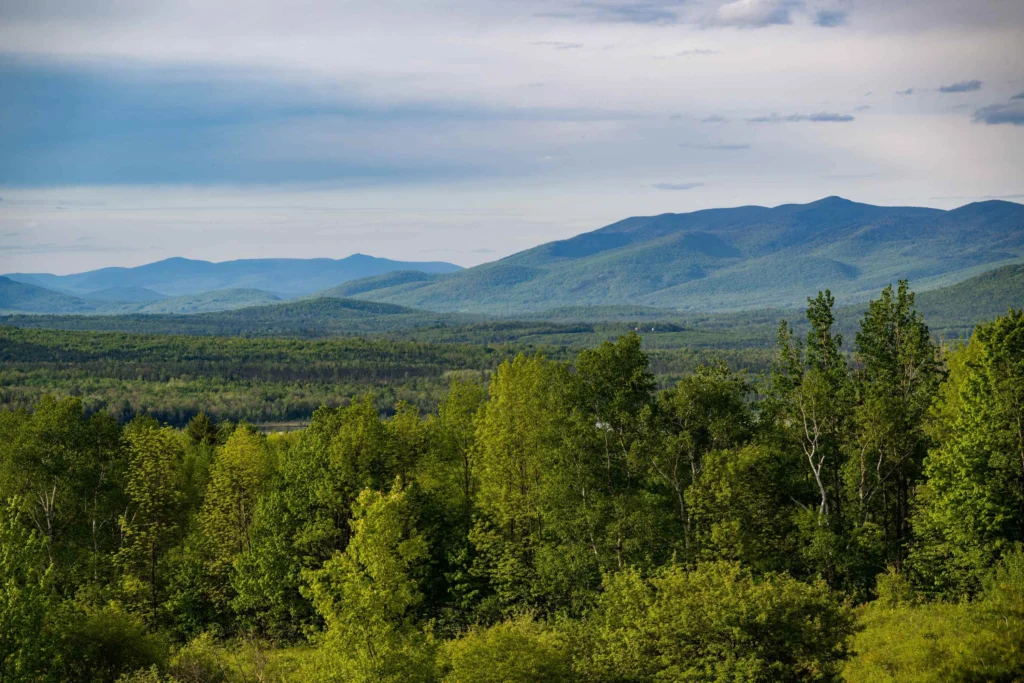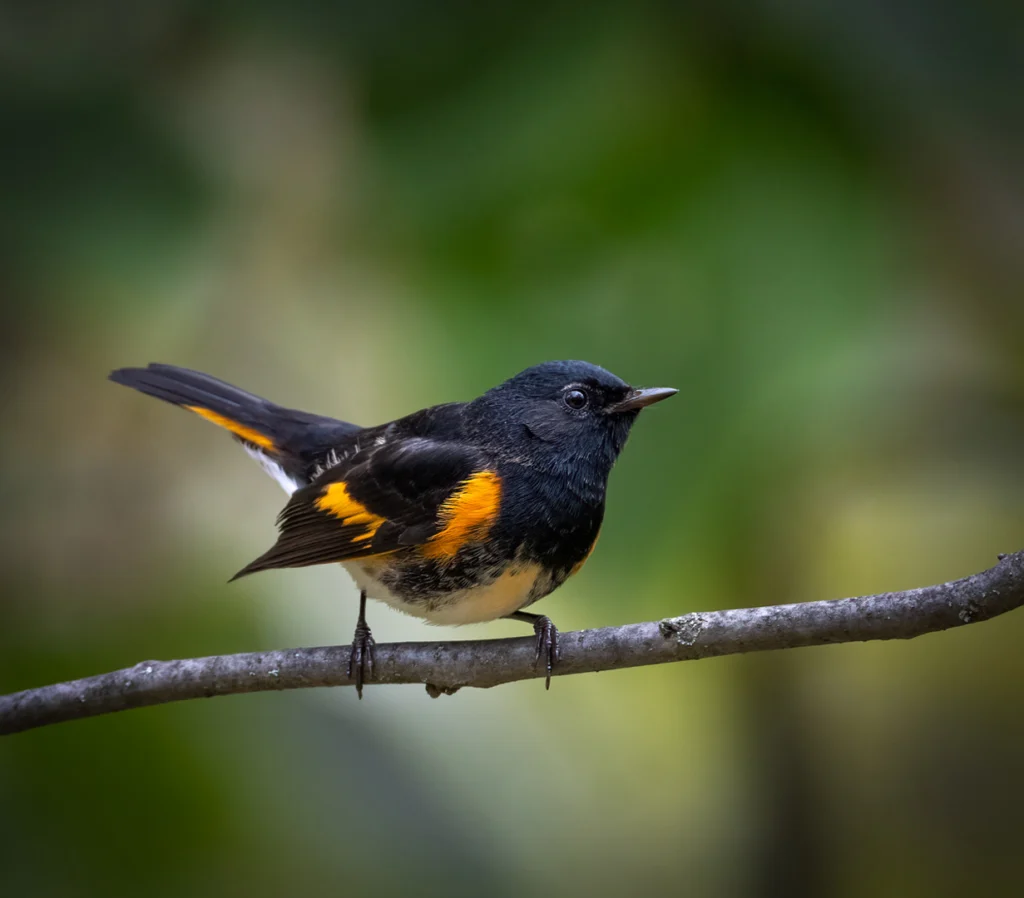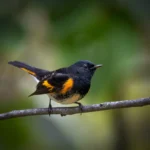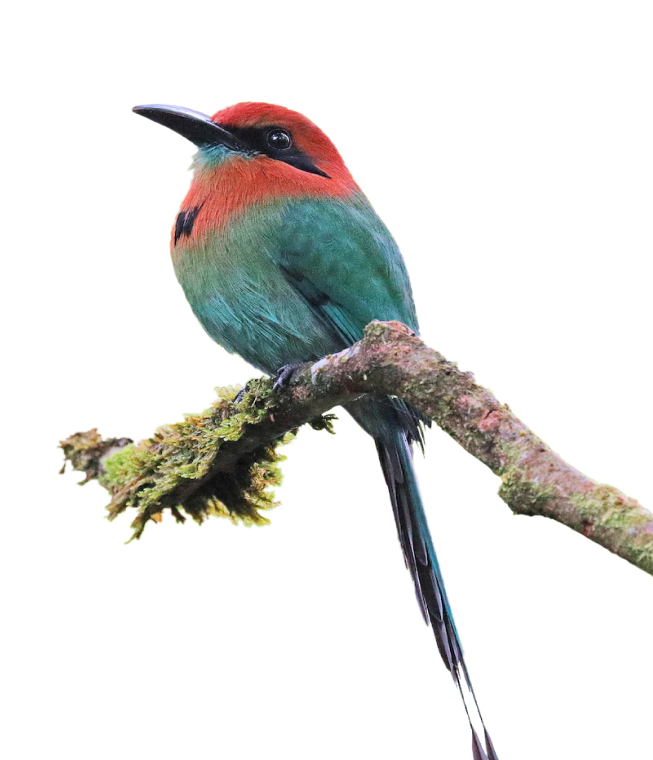
Overview
About
The American Redstart is one of North America’s most recognizable wood-warblers, named for the adult male’s glossy black and orange plumage. Unlike many warblers of its family, such as the Prothonotary, Wilson’s, and Hooded Warblers, the adult male American Redstart lacks yellow plumage.
The word “start” in this bird’s name comes from an Old English word for “tail.” An American Redstart constantly flicks its tail open and closed like a fan, flashing patches of bright orange or yellow. In Latin America, it is often called candelita, or “little candle.”
The American Redstart’s short, rather flat bill, surrounded by stiff, whisker-like rictal bristles, resembles the bills of unrelated insectivorous birds of the tyrant flycatcher family, such as the Great Crested Flycatcher and Eastern Phoebe. These features help the American Redstart catch insect prey while in flight, which it does more regularly than other warbler species.
Threats
Birds around the world face mounting and urgent threats, and many species are in decline. Some face acute, urgent threats, but the pervasive dangers of habitat loss and pesticides make all birds more vulnerable. Species like the American Redstart undertake long-distance migratory journeys that are fraught with risks.
Habitat Loss
The biggest threat to the American Redstart is habitat loss on its breeding and nonbreeding grounds and at stopover sites in between. With a preference for undisturbed forests, the American Redstart is at risk when forests undergo fragmentation, development, and conversion for human use.
Glass Collisions
More than one billion birds are killed in window collisions in the United States alone each year. American Redstarts and other migratory birds are killed during their nocturnal journeys by colliding with human-made objects such as communications towers and glass.
Pesticides & Toxins
Harsh chemicals in pesticides can hurt birds through direct poisoning and through the depletion of their insect prey. As insectivores, American Redstarts are particularly vulnerable to the negative effects of pesticides.
Conservation Strategies & Projects
Birds need our help to overcome the threats they face. At ABC, we’re inspired by the wonder of birds and driven by our responsibility to find solutions to meet their greatest challenges. With science as our foundation, and with inclusion and partnership at the heart of all we do, we take bold action for birds across the Americas.
Protecting Migration
ABC is committed to safeguarding the full annual life cycle of migratory birds such as the American Redstart. We work closely with dozens of partners across 15 countries in Latin America and the Caribbean to protect and restore important nonbreeding and stopover habitat for these species.
Avoid Glass Collisions
ABC works on multiple fronts to reduce bird collisions, one of the largest human-caused drivers of bird mortality. Our Collisions program advocates for bird-friendly building policies. We rigorously test glass products for their effectiveness in reducing collisions and help individuals, organizations, and businesses find appropriate solutions for their home or building.
Avoiding Pesticides & Toxins
ABC fights against the most lethal pesticides, including encouraging the U.S. Environmental Protection Agency to require more review of dangerous chemicals and more accountability for pesticide manufacturers. Individuals can help by avoiding pesticide use in their yards and homes.
Gallery
An adult male American Redstart is a lovely combination of glossy black plumage set off by vivid reddish-orange patches on its sides, wings, and tail. Females and young birds, often called “yellowstarts” by birders, are olive-brown above, with a gray head and lemon-yellow patches on the sides, wings, and tail.
First-summer males (two-year-olds) retain juvenile/female plumage, but have varying amounts of black feathering growing in on the head, breast, and back. By their third summer, they will have the black and orange plumage of the adult male.

Sounds
The high-pitched, extremely variable song of the American Redstart can be tricky to learn. One of these sounds very much like that of a Yellow Warbler, another like a Black-and-white Warbler. Can you tell the difference?
William Whitehead, XC477187. Accessible at www.xeno-canto.org/477187.
Doug Hynes, XC613378. Accessible at www.xeno-canto.org/613378.
Ted Floyd, XC252571. Accessible at www.xeno-canto.org/252571.
Jelmer Poelstra, XC83578. Accessible at www.xeno-canto.org/83578.
Nick Kiehl, XC522368. Accessible at www.xeno-canto.org/522368.
Habitat
The American Redstart is a forest bird, favoring woodland habitats throughout the entire annual cycle.
- Breeds in open deciduous forests and second-growth forests, often favoring interior areas over forest edges
- Also found in the breeding season in thickets, shrubby woodlands, orchards, and mixed deciduous-coniferous woodlands
- During migration, uses various types of shrubby and wooded habitats
- In the nonbreeding season, occupies lowland forests, mangroves, shade coffee and cacao plantations, and other woody areas
Range & Region

Specific Area
North America, Central America, South America, Caribbean
Range Detail
The American Redstart is one of the most numerous warblers in North America because its favored habitat, second-growth forest, covers large areas of the continent.
This colorful songbird breeds across much of the northeastern and central United States and southern Canada, and migrates to nonbreeding grounds in Central America, northern South America, and the Caribbean, and is a common visitor to shade-grown coffee farms in Central and South America.
Did you know?
The American Redstart is a long-distance nocturnal migrant. Individuals breeding in eastern North America migrate to Florida, the Caribbean, and northern South America, while those breeding in central and western North America migrate to Mexico and Central America.
Life History
Compared to many other warblers, American Redstarts have a tendency to make their presence known. It moves at a frenetic pace, hopping among leafy branches, fanning out its tail and wings, and darting out of the foliage to snatch up insects in mid-air. The scrappy American Redstart is highly territorial throughout the year; both males and females engage in singing and displays on breeding and nonbreeding grounds.

Diet
The American Redstart is an insectivore, especially during its breeding season, moving through tree branches and foliage to glean its prey, which includes caterpillars, moths, flies, wasps, beetles, aphids, and spiders. It “flashes” its brightly colored wing and tail patterns by fanning its tail and drooping its wings as it forages — behavior that is thought to startle insects into flight, making them easier to capture, and giving this brightly colored little warbler yet another nickname: “the butterfly of the bird world.”
In late summer, the American Redstart adds small fruits to its diet. Planting serviceberry, magnolia, or other native trees that produce small berries and host a variety of insects might attract migrating American Redstarts to your yard.
Courtship
Upon arriving on the breeding grounds, male redstarts court newly arriving females with behaviors similar to those usually used in defensive displays, including in-flight chasing and vigorous posturing.
Although American Redstart pairs are usually monogamous during the breeding season, extra-pair copulation occurs among both sexes, resulting in nestlings with mixed paternity. Occasionally, a male redstart will mate with a second female outside of its territory once its first mate is on the nest. These polygamous males usually give more attention to their first brood than to the second.
Nesting
A male redstart will show his mate several potential nest sites within a territory, but the female makes the final site choice. She builds a cup-shaped nest using bark strips, grass, plant down, and other natural fibers, and lines it with soft materials that include fur and feathers. The nest is “glued” with spider silk to the forked branches of a tree or shrub, well-hidden within the foliage.
Eggs & Young
The female redstart lays an average of three to four eggs, which she incubates herself for 10 to 13 days. Once the young hatch, both parents feed them for several weeks until fledging. Once the young are out of the nest, the parents split the brood, each continuing to feed one or two offspring for a few more weeks until they are fully independent. Brown-headed Cowbirds, which have experienced a massive expansion of their range as humans have altered the landscape, frequently parasitize American Redstart nests, leaving redstart parents to raise cowbird young, to the detriment of their own.











